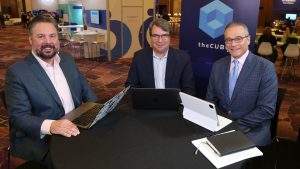VDI Now!
![]() One of the most important messages of VWworld 2013 to CIOs is you need VDI, not in 18 months, but now. And if you are not implementing VDI right now, be assured that at least some of your business units will be signing contracts with VDI-as-a-Service vendors before the end of the year.
One of the most important messages of VWworld 2013 to CIOs is you need VDI, not in 18 months, but now. And if you are not implementing VDI right now, be assured that at least some of your business units will be signing contracts with VDI-as-a-Service vendors before the end of the year.
How important is this? VMware CEO Pat Gelsinger has made VDI one of the three main focus points of the streamlined, tightly focused VMware he created when he took the company over a year ago. He has named Sanjay Poonen, GM VMware End User Computing to head of a new VDI division, complete with an engineering team and dedicated sales force. That is a major investment by a very smart industry leader who obviously believes that VDI is real.
So why do CIOs need to pay attention? BYOD. The only way that companies can deliver the full set of business services to the growing internal population of mobile devices — not just iPhones and iPads but a confusing mix of Android devices with varying capabilities, and outliers including RIM tablets and Windows 8 devices — while keeping valuable and often sensitive data secure and meet end-user expectations is VDI.
But VDI of course is a huge addition to the infrastructure, requiring new hardware and software, possible network upgrades, and honestly the end-user software licensing situation is a nightmare. All of that has to be budgeted, planned, purchased, installed, tested, and integrated. On the other hand when an SVP wants VDI to support vital business activities, “we can have it in 18 months” is the wrong answer.
VDI-as-a-Service
So how does the CIO get ahead of this, provide the services that the business needs now, and start building a reputation as the go-to person for advanced business services rather than an anchor? VDI-as-a-Service (VaaS). In general CIOs who want to keep their jobs and preserve their ITOs need to stop fighting public cloud services and instead embrace them fully as the answer to the rapid response needs of their organizations.
This is not giving away the farm. No law says that the move to public cloud is a one-way street. They can either be a permanent solution or a temporary answer until IT can build the internal infrastructure and bring the service in house. In general smart CIOs should have at least one direct report charged with researching cloud services in general and looking at now the company can best utilize them as part of the overall IT plan.
CIOs also should consider partnering with a colocator that also offers cloud services such as IaaS (a natural extension of their business) and in this case VaaS, just as they partner with their core traditional IT vendors. The business of these companies is working with ITOs of companies of all sizes. Services like high security, compliance, QoS, and back-end integration with in-house systems-of-record are built in from the start. One major colocator who was asked about compliance during a Wikibon Peer Incite Meeting answered, “I have auditors in my shop every week. Compliance audits are a routine part of our business.”
This does not of course mean that CIOs should just blindly sign a contract. Even smaller companies should ask for and expect that they have full control of their data, that they have full information on the security of that data and what to expect in disaster recovery. They should require back-end data access in a format that can be used by their internal systems including decision support. And in case the company does move the VDI system in-house, the details of how and how long the data transfer will take place should be negotiated before the contract is signed. You should have real availability and QoS guarantees that reflect the needs of the business, backed up by fines for failure to deliver. Most important, the contract should make ownership of the data clear so that if the service provider is sold or shuts down you get your data back immediately and do not have to wait months for a bankruptcy court.
Bottom Line
CIOs need to realize that they are operating in a new world. The common marketing phrase “the speed of business” means yesterday, not two years from now. They need to bring that message to every person in the ITO. And they need to make their infrastructure as agile as possible — that is what the Software-Led Data Center is about. But they also have to stop seeing cloud services as the enemy and embrace them as part of the IT strategic plan. CIOs need to become service brokers, not in a decade but today, and not hesitate to plug in public cloud services both as permanent parts of the IT infrastructure where appropriate and as stop-gaps to meet immediate business needs where needed. Business leaders today do have a choice, and CIOs who do not become the go-to person in their organizations for IT services will see shadow IT taking that role instead. And VDI is a good place to start.
A message from John Furrier, co-founder of SiliconANGLE:
Your vote of support is important to us and it helps us keep the content FREE.
One click below supports our mission to provide free, deep, and relevant content.
Join our community on YouTube
Join the community that includes more than 15,000 #CubeAlumni experts, including Amazon.com CEO Andy Jassy, Dell Technologies founder and CEO Michael Dell, Intel CEO Pat Gelsinger, and many more luminaries and experts.
THANK YOU













